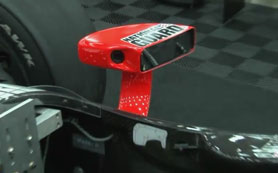In-car cameras
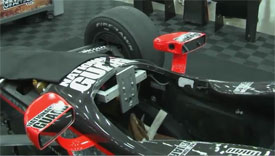 The process of creating television has changed a lot over 33 years of MotorWeek, and we continue to look for new ways to make our car reviews and features more visually exciting. But, when it comes to mixing exciting views and cars, Yolanda Vazquez has found the pioneers that put millions of TV racing fans in the driver’s seat.
The process of creating television has changed a lot over 33 years of MotorWeek, and we continue to look for new ways to make our car reviews and features more visually exciting. But, when it comes to mixing exciting views and cars, Yolanda Vazquez has found the pioneers that put millions of TV racing fans in the driver’s seat.
YOLANDA VAZQUEZ: Ever wonder how a cool gyro-cam shot comes to life? Most of us probably don’t think twice about clever camera angles when watching a car race…but there’s a lot of behind-the-scenes work that happens to make sure each shot goes off without a hitch.
PETER LARSSON: On a normal track, you can come in two or three days beforehand and lay all the fiber. So we have a big crew that come in, they work very late that night.
YOLANDA VAZQUEZ: Peter Larsson knows the setup like the back of his hand. As General Manager of Broadcast Sports Inc. in Hanover, Maryland, he’s been working with in-car cameras for auto racing since the early 80s.
PETER LARSSON: Back then, the technology had just gotten to the point where the equipment could fit into a racecar.
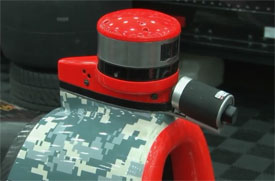 YOLANDA VAZQUEZ: Now the cameras are mounted into the cars themselves. We were on-hand as this racecar was prepped for the Baltimore Grand Prix. It had three barely discernible HD cameras onboard: a remotely controlled 360 degree on top, a second one by the driver’s side mirror, and a third known as a rear wing camera. And yes, they’re all designed to withstand the rigors of track racing.
YOLANDA VAZQUEZ: Now the cameras are mounted into the cars themselves. We were on-hand as this racecar was prepped for the Baltimore Grand Prix. It had three barely discernible HD cameras onboard: a remotely controlled 360 degree on top, a second one by the driver’s side mirror, and a third known as a rear wing camera. And yes, they’re all designed to withstand the rigors of track racing.
ANDY UHLING: It’s a very tough environment that the cameras have to deal with.
YOLANDA VAZQUEZ: Andy Uhling is the engineering manager at BSI. He and his staff design all of the mechanical equipment, cameras and parts needed for the big race.
ANDY UHLING: We do a very specialized thing, so you can’t buy a lot of what we need off the shelf.
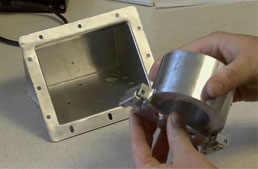 YOLANDA VAZQUEZ: For example, this aluminum transmitter receiver that was designed in-house, now going through an automated milling machine at BSI. They’ll mass produce them for their clients.
YOLANDA VAZQUEZ: For example, this aluminum transmitter receiver that was designed in-house, now going through an automated milling machine at BSI. They’ll mass produce them for their clients.
PETER LARSSON: We’re invested in C&C mills…to build all of the mechanical hardware that we need. Back in the old days, our production runs used to be three. Now we do a hundred of each piece.
YOLANDA VAZQUEZ: And their camera shop is just as busy with technicians, making repairs and assessing each camera’s motor functions after a weekend’s race.
PETER LARSSON: They come in Sunday night, first thing Monday morning, and the guys here strip them down, clean them up, repair any damage that’s done to them, and get them ready to go out the following weekend.
YOLANDA VAZQUEZ: Mechanical engineer Mike Sartin, who works on the NASCAR series, says cars without cameras must carry a dummy weight; this helps level the playing field. He thinks the future of in car camera technology is wide open.
MIKE SARTIN: As our equipment gets smaller, as it gets lighter, and we can integrate it into more places so you can get those shots that you wouldn’t ever think that you’d be able to get.
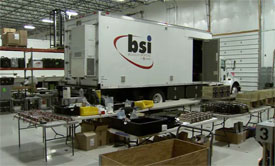 YOLANDA VAZQUEZ: With a staff of over 150 people, and a travel schedule that keeps them busy year-round, BSI’s 55,000 square-foot headquarters is like a mini command center with thirteen mobile units. They’ve covered every major sporting event over the past 30 years using the latest in cutting edge technology.
YOLANDA VAZQUEZ: With a staff of over 150 people, and a travel schedule that keeps them busy year-round, BSI’s 55,000 square-foot headquarters is like a mini command center with thirteen mobile units. They’ve covered every major sporting event over the past 30 years using the latest in cutting edge technology.
When they’re not able to take their mobile units out on the road, they have something called “BSI in a box”. That’s where they take all of the equipment from the mobile unit, and place it in boxes, several of them, pack it up, ship it out, and it’s shock mounted so that nothing gets destroyed. And if you take a look over here, you’ll see a slew of equipment…that’s because they’re getting ready for a big event.
PETER LARSSON: We’re very lucky that we picked up a contract with the Winter Olympics in Sochi. Because it’s in Russia, all of the equipment has to be shipped months before the actual event.
YOLANDA VAZQUEZ: Larsson believes the sky’s the limit when it comes to the future of onboard camera technology. BSI has been at the forefront of this innovative industry, and will continue to give viewers their best shot from any and every angle imaginable.




